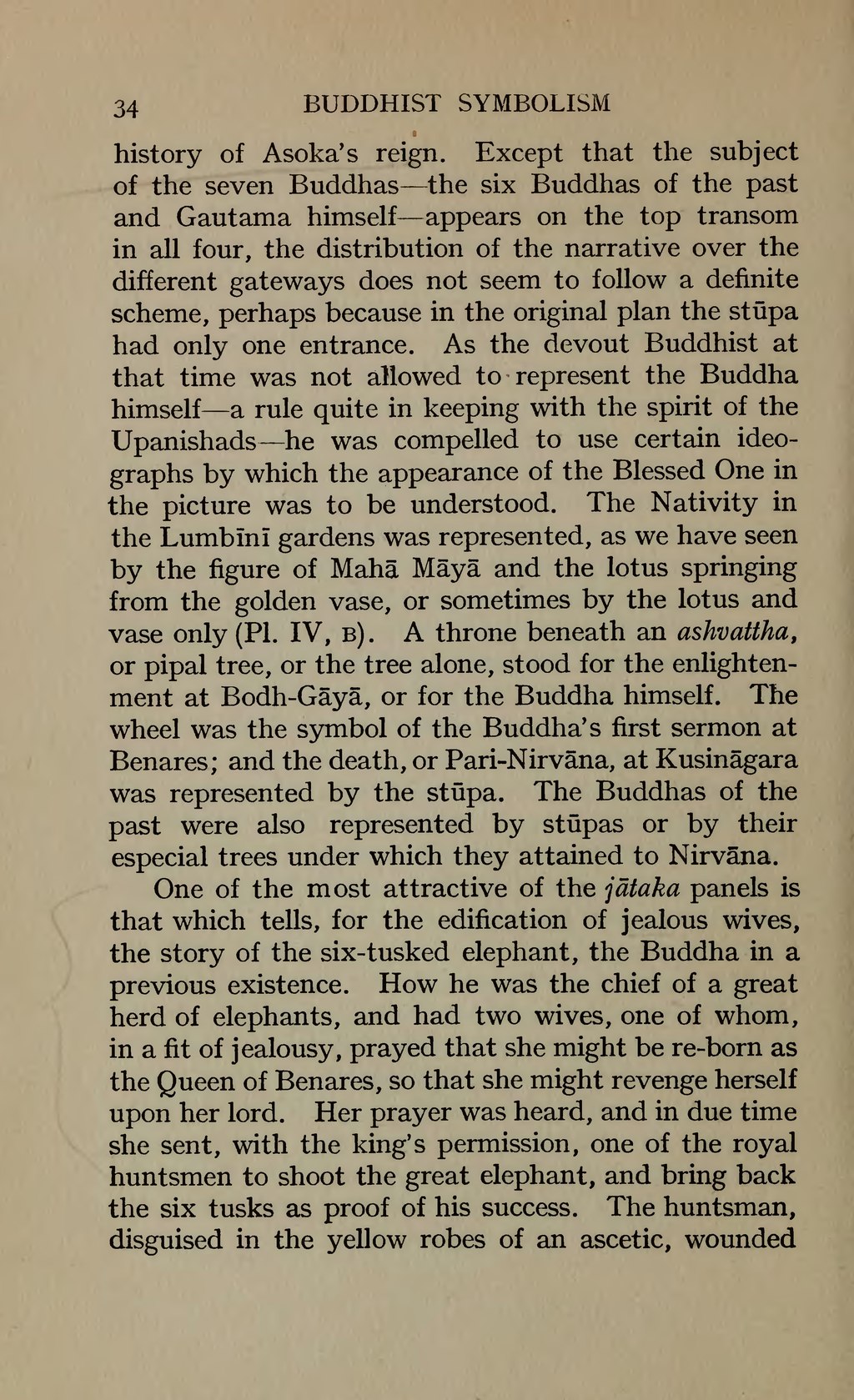history of Asoka's reign. Except that the subject of the seven Buddhas—the six Buddhas of the past and Gautama himself—appears on the top transom in all four, the distribution of the narrative over the different gateways does not seem to follow a definite scheme, perhaps because in the original plan the stūpa had only one entrance. As the devout Buddhist at that time was not allowed to represent the Buddha himself—a rule quite in keeping with the spirit of the Upanishads—he was compelled to use certain ideographs by which the appearance of the Blessed One in the picture was to be understood. The Nativity in the Lumbīnī gardens was represented, as we have seen by the figure of Mahā Māyā and the lotus springing from the golden vase, or sometimes by the lotus and vase only (Pl. IV, b). A throne beneath an ashvattha, or pipal tree, or the tree alone, stood for the enlightenment at Bodh-Gāyā, or for the Buddha himself. The wheel was the symbol of the Buddha's first sermon at Benares; and the death, or Pari-Nirvāna, at Kusināgara was represented by the stūpa. The Buddhas of the past were also represented by stūpas or by their especial trees under which they attained to Nirvāna.
One of the most attractive of the jātaka panels is that which tells, for the edification of jealous wives, the story of the six-tusked elephant, the Buddha in a previous existence. How he was the chief of a great herd of elephants, and had two wives, one of whom, in a fit of jealousy, prayed that she might be re-born as the Queen of Benares, so that she might revenge herself upon her lord. Her prayer was heard, and in due time she sent, with the king's permission, one of the royal huntsmen to shoot the great elephant, and bring back the six tusks as proof of his success. The huntsman, disguised in the yellow robes of an ascetic, wounded
